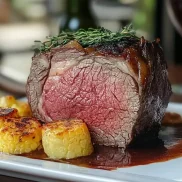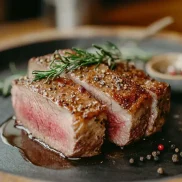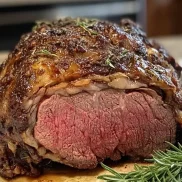Are tenderloin tips the same as filet mignon? While both come from the prized tenderloin, they have key differences in texture, size, and preparation. Filet mignon is a premium, uniform cut known for its tenderness, while tenderloin tips are smaller, irregular pieces perfect for versatile cooking. Understanding these distinctions helps you choose the best option for your dish. For inspiration, check out this beef tenderloin tips recipe and explore delicious ways to enjoy these cuts!
Table of Contents
Understanding Tenderloin: Anatomy and Characteristics
What Is the Tenderloin?
The tenderloin is a long, cylindrical muscle located within the loin of the cow, running along the spine. This muscle sees minimal use during the animal’s life, making it exceptionally tender compared to other cuts of beef. Often referred to as the “psoas major,” the tenderloin’s primary function is to provide structural support rather than active movement, which contributes to its velvety texture. This cut is sought after for its melt-in-your-mouth quality, making it a staple in high-end steakhouses and fine dining.
The tenderloin is divided into three main sections: the head (closest to the shoulder), the center cut (widely regarded as the most desirable portion), and the tail (a narrower, leaner section). Each part offers unique qualities suitable for different culinary applications, but all share the hallmark tenderness that defines this cut.
Key Features of Tenderloin Cuts
Several characteristics make tenderloin cuts stand out:
- Tenderness: The tenderloin is universally recognized as one of the most tender cuts of beef due to its low level of connective tissue.
- Leanness: While it lacks the marbling of cuts like ribeye, its lean profile appeals to those seeking a healthier yet luxurious option.
- Mild Flavor: The tenderloin’s subtle taste serves as a blank canvas for seasoning, marinades, and sauces.
- Versatility: Whether roasted whole, sliced into medallions, or used in stir-fries, the tenderloin adapts beautifully to various cooking techniques.
These attributes make the tenderloin a favorite for recipes requiring precision and finesse.
Common Cooking Methods for Tenderloin
Given its delicate texture, the tenderloin demands careful preparation to preserve its tenderness and flavor. Here are some popular cooking methods:
- Roasting: Ideal for whole tenderloin, roasting ensures even cooking and allows for seasoning to penetrate the meat.
- Grilling: Searing medallions of tenderloin on high heat imparts a smoky flavor and creates a crisp exterior.
- Pan-Searing: A classic technique, pan-searing locks in juices and creates a golden crust when paired with butter basting.
- Sous Vide: This method guarantees precise temperature control, resulting in a perfectly cooked tenderloin every time.
- Stir-Frying: Thinly sliced tenderloin works wonderfully in quick stir-fries, absorbing flavors from sauces and seasonings.
No matter the method, it’s crucial to avoid overcooking, as the tenderloin’s leanness makes it susceptible to drying out. Resting the meat after cooking allows the juices to redistribute, enhancing its succulence.
Exploring Filet Mignon: Origins and Details
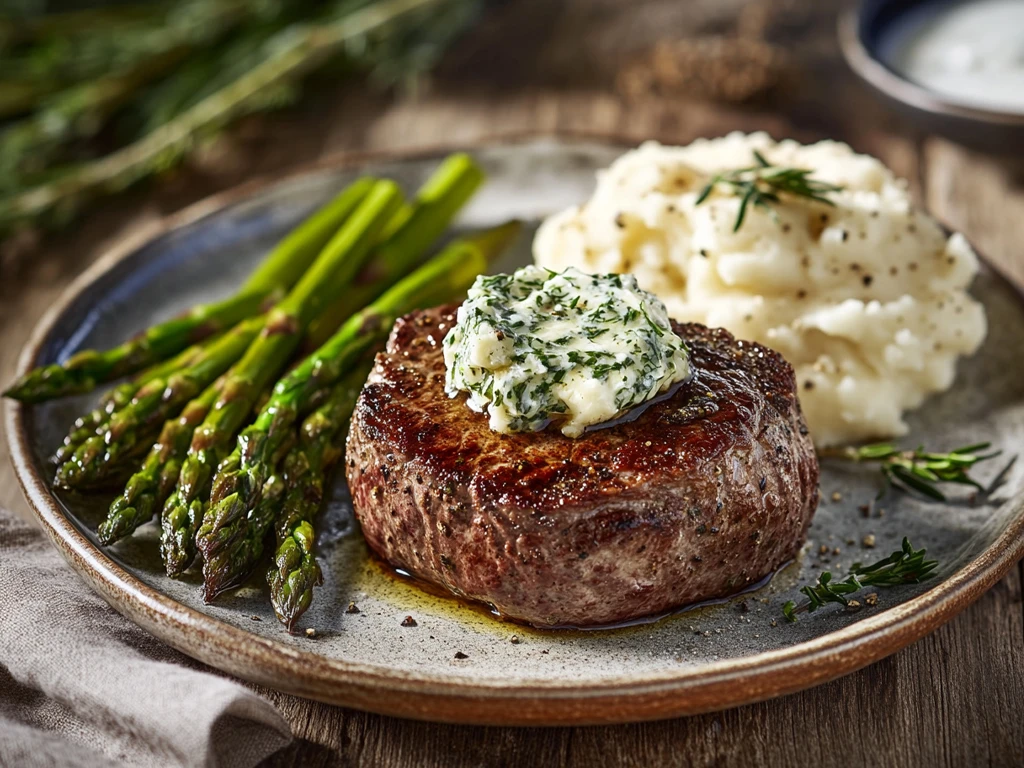
What Is Filet Mignon?
Filet mignon, often praised as the pinnacle of tenderness in the culinary world, remains a highly coveted cut of beef. The name, derived from French, translates to “dainty filet” or “tender slice,” perfectly capturing its delicate texture and refined appeal. It originates from the smaller end of the beef tenderloin and is known for its melt-in-your-mouth consistency and mild flavor, making it a centerpiece in upscale dining.
Unlike other cuts, filet mignon boasts an exceptionally fine grain and minimal connective tissue, which contributes to its unparalleled tenderness. Its small size often results in individual portions that are well-suited for elegant plating and gourmet presentations. While it lacks the intense marbling of fattier cuts like ribeye, its subtle profile is celebrated because it allows complementary sauces, seasonings, and accompaniments to shine.
How Filet Mignon Is Derived from the Tenderloin
The journey of filet mignon begins within the tenderloin, a long, tapered muscle nestled along the cow’s backbone. The tenderloin is divided into three main parts: the head (closer to the shoulder), the center (also known as the “châteaubriand”), and the tail (the narrow end). Filet mignon is carefully cut from the narrowest portion of the tenderloin’s tail end, which is known for its exceptional softness and uniformity.
This precise selection process ensures that filet mignon delivers a consistently luxurious dining experience. Butchers meticulously trim excess fat and silver skin to reveal the pristine, tender meat beneath. The small size of the filet mignon cut is a direct result of its location within the tenderloin, contributing to its exclusivity and premium price point. Given its origins, filet mignon represents the pinnacle of what the tenderloin has to offer, capturing the essence of delicacy and finesse.
Filet Mignon’s Unique Texture and Flavor
What sets filet mignon apart is its unmistakable texture and mild flavor profile. Here are the defining characteristics that make it a standout:
- Texture: The fine muscle fibers and lack of connective tissue give filet mignon its buttery consistency, making it one of the most tender cuts of beef available.
- Flavor: While filet mignon is less marbled than other cuts, its subtle flavor serves as a versatile base for culinary creativity. It pairs effortlessly with rich sauces like béarnaise or peppercorn, as well as bold seasonings and marinades.
- Appearance: Its cylindrical shape and uniform size make it an ideal choice for elegant plating, often tied with butcher’s twine to maintain its perfect form during cooking.
When prepared correctly, filet mignon delivers a luxurious, melt-in-your-mouth experience that’s second to none. Cooking methods such as pan-searing, grilling, or sous vide enhance its delicate texture while preserving its natural juices. Paired with complementary sides like creamy mashed potatoes or sautéed vegetables, filet mignon elevates any meal into an unforgettable culinary experience.
Tenderloin Tips: A Culinary Breakdown
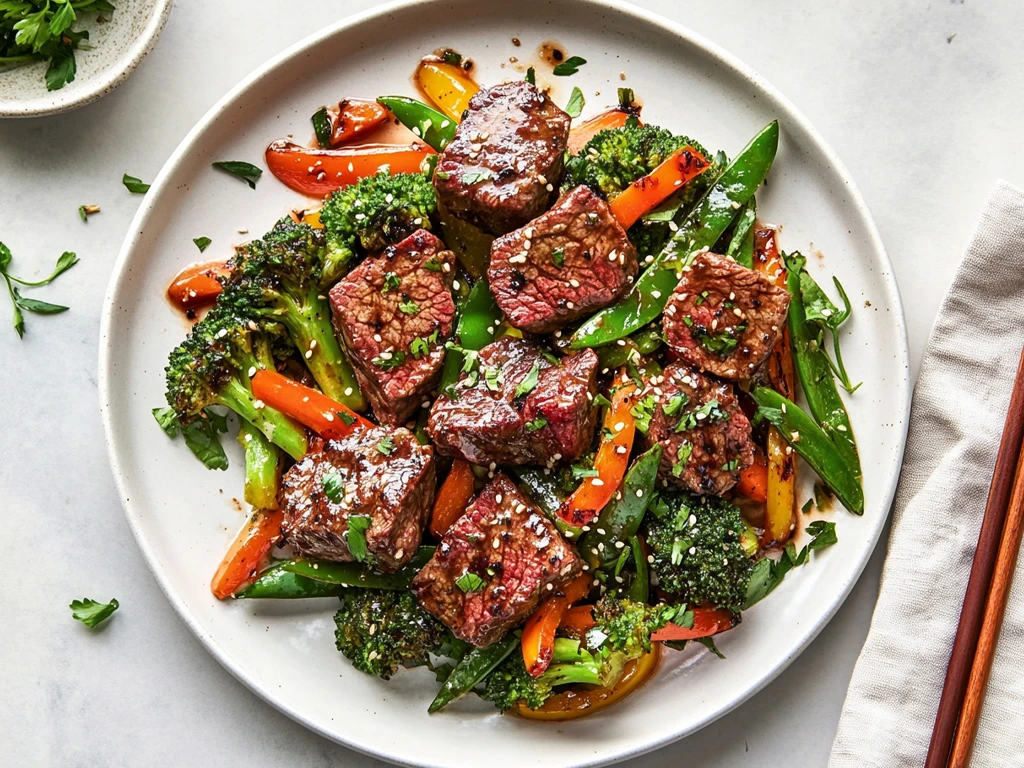
What Are Tenderloin Tips?
Tenderloin tips consist of small, irregular pieces of beef trimmed from the ends of the tenderloin during butchering. Although they lack the uniformity and size of filet mignon or center-cut tenderloin, they offer the same hallmark tenderness and mild flavor. Many consider these tips a hidden gem in the culinary world, providing an affordable entry point to premium-quality beef.
Typically, butchers sell tenderloin tips as a byproduct of cutting larger tenderloin portions. Their smaller size and uneven shapes make them ideal for dishes where presentation is less critical. Whether used in stir-fries or stews, tenderloin tips excel in recipes that prioritize flavor and texture over aesthetics.
Uses and Preparation of Tenderloin Tips
Tenderloin tips’ small size and tender texture make them a favorite for quick-cooking methods. Here are some popular uses and preparation tips:
- Stir-Fries: Thinly sliced tenderloin tips cook rapidly and absorb sauces and seasonings beautifully, making them ideal for Asian-inspired stir-fries.
- Stews and Braises: Their tenderness allows them to remain juicy and flavorful even after extended cooking times, making them perfect for hearty dishes like beef bourguignon.
- Skewers and Kebabs: Tenderloin tips’ bite-sized nature lends itself to grilling or broiling on skewers, paired with vegetables for a crowd-pleasing meal.
- Tacos and Wraps: Marinate tenderloin tips in spices, then sear or grill them for a flavorful filling.
- Quick Sautés: Pan-sear the tips with butter, garlic, and herbs for a simple yet luxurious dish.
Preparation Tips:
- Trimming: Remove any excess fat or silver skin to ensure even cooking and optimal texture.
- Marinating: Since tenderloin tips are lean, marinating them can enhance their flavor and prevent drying out.
- Cooking Time: Avoid overcooking, as their lean nature can make them prone to drying out.
With their versatility, tenderloin tips can elevate everyday meals without the hefty price tag of larger tenderloin cuts.
Cost Comparison: Tenderloin Tips vs. Filet Mignon
One of the most significant distinctions between tenderloin tips and filet mignon is their price point. Here’s a breakdown of the cost comparison:
| Aspect | Tenderloin Tips | Filet Mignon |
|---|---|---|
| Price per Pound | Typically $10–$20 | Often $25–$50 |
| Availability | Widely available in bulk | Limited and premium cuts only |
| Presentation | Irregular, smaller pieces | Uniform, elegant medallions |
| Culinary Use | Casual or everyday cooking | Special occasions, fine dining |
Tenderloin tips offer excellent value for those seeking the tenderloin’s signature qualities at a more affordable price. While filet mignon remains the gold standard for presentation and luxury, tenderloin tips hold their own in flavor and versatility. This affordability allows home cooks to experiment with tenderloin’s tenderness in a wide range of dishes without breaking the bank.
Are Tenderloin Tips the Same as Filet Mignon? Key Differences Explained
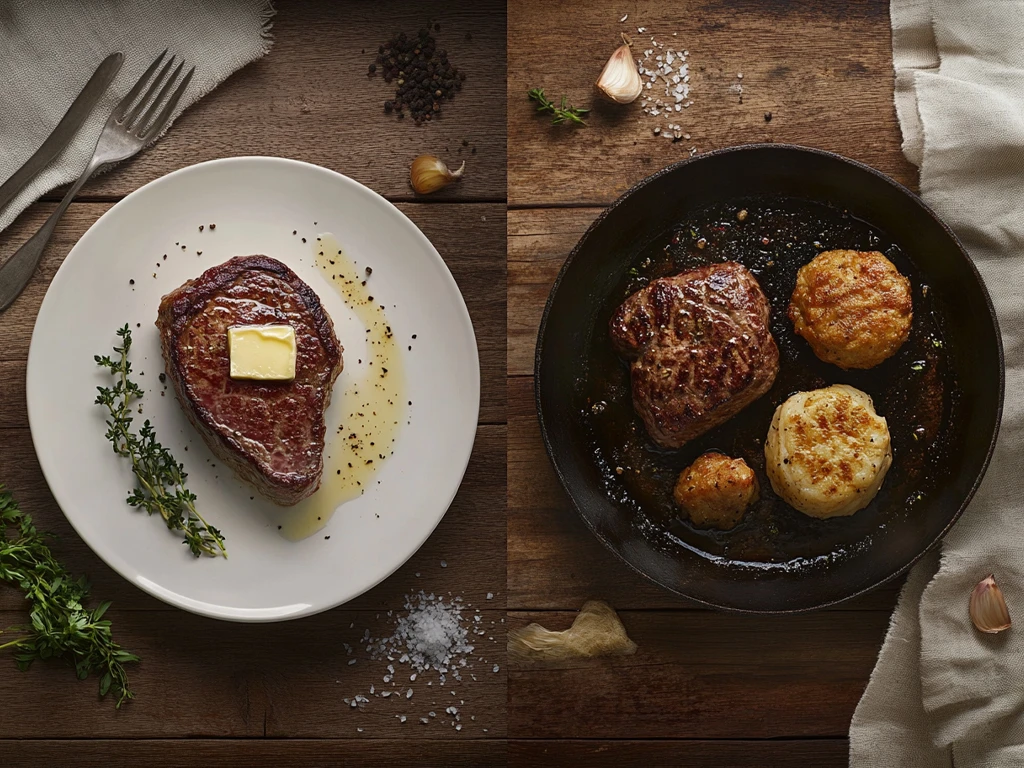
Size and Shape Variations
The most noticeable difference between tenderloin and filet mignon lies in their size and shape. The tenderloin is a long, cylindrical muscle that tapers at one end, providing a variety of cuts, from the head to the tail. It can be roasted whole, cut into steaks, or trimmed into smaller portions like tenderloin tips. On the other hand, filet mignon is a specific cut taken from the smaller end of the tenderloin. It’s compact, round, and uniform, typically weighing between 4 to 8 ounces per steak. This uniformity makes filet mignon ideal for elegant plating, whereas the tenderloin offers more versatility in preparation.
Flavor Profiles and Culinary Uses
When it comes to flavor, the tenderloin and filet mignon share similarities but also have distinct differences:
- Tenderloin: With a mild and subtle beef flavor, the tenderloin serves as a blank canvas for marinades, rubs, and sauces. It’s perfect for recipes that require precision and adaptability, such as beef Wellington or roasted tenderloin.
- Filet Mignon: While also mild in flavor, filet mignon is prized for its velvety texture rather than its taste. It’s often paired with rich accompaniments like béarnaise sauce or wrapped in bacon to enhance its profile. Filet mignon’s luxurious tenderness makes it a staple in fine dining settings.
Culinary uses further set them apart. The tenderloin’s larger size lends itself to a variety of cooking methods, including roasting, grilling, and pan-searing, while filet mignon’s compact nature is best suited for high-heat cooking techniques like searing or grilling.
Nutritional Comparison
Nutritional differences between tenderloin and filet mignon are minimal, as both cuts are lean and protein-rich. However, here’s a comparison based on a 3-ounce serving:
| Nutrient | Tenderloin | Filet Mignon |
|---|---|---|
| Calories | ~179 | ~185 |
| Protein | ~26g | ~27g |
| Fat | ~7g | ~8g |
| Cholesterol | ~75mg | ~80mg |
Both cuts are excellent choices for health-conscious diners, but their low fat content means careful cooking is necessary to prevent drying out.
Price Point and Accessibility
Price and availability are significant factors when choosing between tenderloin and filet mignon:
- Tenderloin: While still considered premium, the tenderloin’s cost per pound is generally lower than filet mignon, especially when purchased whole. Its availability in bulk makes it a popular choice for large gatherings or meal prepping.
- Filet Mignon: As a highly prized cut, filet mignon commands a higher price per pound due to its exclusivity and labor-intensive preparation. Its individual portions are often sold at specialty markets or high-end grocery stores.
| Aspect | Tenderloin | Filet Mignon |
| Price per Pound | $15–$25 | $30–$50 |
| Ease of Purchase | Widely available in various forms | Limited to specialty cuts |
| Ideal Use | Versatile for multiple dishes | Best for special occasions |
In summary, while both cuts boast exceptional tenderness and quality, choosing between tenderloin and filet mignon often comes down to personal preference, budget, and intended use. Both cuts have their place in the culinary world, catering to different needs and occasions.
Similarities Between Tenderloin Tips and Filet Mignon
Shared Origins in the Tenderloin Cut
One of the most significant similarities between tenderloin tips and filet mignon is their shared origin: the tenderloin. This long, lean muscle runs along the cow’s spine and is known for its unparalleled tenderness. Both tenderloin tips and filet mignon are derived from this prized section, ensuring they share the same delicate texture that makes them so sought after.
Tenderloin tips are typically trimmed from the ends or irregular portions of the tenderloin, while filet mignon is taken from the smaller, uniform center-cut portion. Despite their differences in size and shape, both cuts boast the tenderloin’s hallmark characteristics: fine muscle fibers, minimal connective tissue, and a mild, buttery flavor. These shared attributes make both tenderloin tips and filet mignon excellent choices for dishes where tenderness is a priority.
Comparable Cooking Techniques
Another area of overlap between tenderloin tips and filet mignon is the cooking techniques used to prepare them. Their tender nature allows both cuts to be cooked using high-heat, quick methods that preserve their juiciness and flavor. Here are some popular techniques that work equally well for both:
- Grilling: High heat on the grill creates a beautifully seared crust while keeping the interior tender and juicy. Filet mignon steaks and skewered tenderloin tips both benefit from this method.
- Pan-Searing: Cooking in a hot skillet with a bit of butter or oil enhances the natural flavors of these cuts. Adding fresh herbs and garlic during the cooking process can elevate the dish.
- Sous Vide: For precise temperature control, sous vide ensures both tenderloin tips and filet mignon are cooked evenly, retaining their tenderness without overcooking.
- Broiling: The intense heat of the broiler creates a golden, caramelized exterior while maintaining a succulent interior.
- Stir-Frying: While filet mignon is less commonly used for stir-frying, tenderloin tips are perfect for this quick, flavorful method due to their smaller size and adaptability.
Regardless of the technique, the key to cooking both cuts is to avoid overcooking. Their leanness means they can dry out quickly, so monitoring the temperature and resting the meat after cooking are essential steps to maximize flavor and texture.
By understanding their shared origins and similar cooking methods, you can appreciate the versatility and value both tenderloin tips and filet mignon bring to the table. Whether you’re planning an elegant dinner or a casual meal, these cuts offer endless possibilities for creating memorable dishes.
Practical Cooking Tips for Tenderloin and Filet Mignon
Recommended Recipes for Filet Mignon
Filet mignon’s luxurious tenderness makes it a versatile centerpiece for a variety of sophisticated dishes. Here are some recommended recipes to make the most of this prized cut:
- Classic Filet Mignon with Herb Butter: Season the steak simply with salt and pepper, then pan-sear it to perfection. Top with a dollop of herb butter just before serving for an elevated flavor experience.
- Bacon-Wrapped Filet Mignon: Wrapping the steak in bacon not only adds a smoky flavor but also helps retain moisture during cooking. It’s a decadent option for special occasions.
- Filet Mignon with Red Wine Reduction: A rich, savory sauce made from red wine, shallots, and beef stock complements the mild flavor of the filet.
- Grilled Filet Mignon: A quick sear on a hot grill creates a beautiful crust, while the interior remains tender and juicy. Pair with grilled vegetables for a complete meal.
- Sous Vide Filet Mignon: Cook the steak sous vide for precise doneness, then finish with a quick sear for a restaurant-quality presentation.
Creative Dishes with Tenderloin Tips
Tenderloin tips are ideal for more casual and creative dishes, thanks to their smaller size and versatility. Here are some ideas to inspire your next meal:
- Beef Stir-Fry with Vegetables: Thinly sliced tenderloin tips cook quickly and absorb the flavors of soy sauce, garlic, and ginger, making them perfect for a stir-fry.
- Tenderloin Tips Stroganoff: Combine tenderloin tips with a creamy mushroom sauce and serve over egg noodles for a hearty, comforting dish.
- Steak Tacos: Marinate tenderloin tips in a blend of lime juice, chili powder, and cumin, then grill and serve in warm tortillas with fresh toppings.
- Beef Skewers: Thread tenderloin tips onto skewers with bell peppers, onions, and cherry tomatoes. Grill until lightly charred for a flavorful, easy-to-eat meal.
- Tenderloin Tips and Rice Bowls: Sauté the tips with garlic and onions, then serve over steamed rice with a drizzle of teriyaki or sesame sauce.
Pairing Suggestions for Both Cuts
Pairing the right sides and beverages with tenderloin or filet mignon enhances the overall dining experience. Here are some suggestions:
Side Dishes
- Mashed Potatoes: Creamy and buttery, mashed potatoes complement the rich, tender texture of both cuts.
- Roasted Asparagus: Lightly seasoned and roasted asparagus adds a crisp, fresh contrast.
- Garlic Green Beans: A simple sauté of green beans with garlic pairs well with the mild flavors of these cuts.
- Wild Rice Pilaf: The nutty, earthy flavor of wild rice provides a hearty base.
Wine Pairings
- Filet Mignon: Pair with a full-bodied red wine like Cabernet Sauvignon or Merlot to match its richness.
- Tenderloin Tips: A lighter red like Pinot Noir or a fruity Zinfandel complements the versatility of tenderloin tips.
Whether you’re preparing an elegant filet mignon dish or a casual tenderloin tips meal, these tips and recipes ensure a delightful culinary experience. By experimenting with these suggestions, you can make the most of these premium cuts of beef.
Frequently Asked Questions
What are beef tenderloin tips good for?
Beef tenderloin tips are incredibly versatile and perfect for a variety of dishes. They’re excellent in stir-fries, stews, tacos, or kebabs due to their small, tender pieces. Their lean texture allows them to cook quickly, making them ideal for weeknight meals or recipes where you want the luxurious texture of tenderloin without the cost of larger cuts. Whether sautéed, grilled, or braised, tenderloin tips shine in casual yet flavorful dishes. Learn more
Are beef tenderloin tips tender?
Yes, beef tenderloin tips are exceptionally tender because they’re trimmed from the same muscle as the prized filet mignon. Despite their smaller, less uniform appearance, they retain the hallmark tenderness that makes the tenderloin famous. Their fine muscle fibers and minimal connective tissue ensure a melt-in-your-mouth texture when cooked properly. Learn more
Which cooking method is best for beef tenderloin?
The best cooking method for beef tenderloin depends on the specific cut and dish. For whole tenderloin, roasting or grilling is ideal to achieve even cooking and rich flavor. Filet mignon, the premium cut from the tenderloin, is best pan-seared, grilled, or cooked sous vide for precise doneness. For tenderloin tips, sautéing, stir-frying, or skewering are popular methods that highlight their tenderness and versatility. Learn more
How does filet mignon differ from tenderloin tips?
Filet mignon is a specific, uniform cut taken from the center of the tenderloin, prized for its luxurious texture and elegant appearance. Tenderloin tips, on the other hand, are smaller, irregular pieces trimmed from the ends of the tenderloin. While both share the tenderloin’s signature tenderness, filet mignon is better suited for fine dining and formal occasions, whereas tenderloin tips are ideal for casual and versatile dishes.
What is the best way to season tenderloin tips?
Tenderloin tips have a mild flavor that serves as a perfect base for various seasonings. A simple combination of salt, pepper, garlic, and fresh herbs enhances their natural taste. Marinating the tips in soy sauce, olive oil, and spices like paprika or cumin can add depth for stir-fries or tacos. For grilling, a dry rub with smoky or spicy elements works beautifully.
Is beef tenderloin worth the price?
Absolutely, beef tenderloin is worth the price for its unmatched tenderness and versatility. While it’s a premium cut, its leanness and melt-in-your-mouth texture make it a favorite for special occasions. For budget-friendly options, tenderloin tips offer the same quality at a fraction of the cost, making them an excellent alternative for everyday cooking.
Conclusion
When it comes to choosing between tenderloin tips and filet mignon, both cuts offer unique benefits tailored to different culinary needs. Filet mignon stands out for its unparalleled tenderness and elegance, making it the star of formal dinners and upscale menus. Tenderloin tips, on the other hand, provide an affordable and versatile option, ideal for creative dishes and everyday meals.
Understanding the similarities and differences between these cuts empowers you to make informed decisions in the kitchen. Both share the tenderloin’s hallmark qualities but cater to distinct preferences and budgets. Whether you’re savoring a perfectly seared filet mignon or enjoying a flavorful stir-fry with tenderloin tips, these cuts guarantee a delightful dining experience.
So, are tenderloin tips the same as filet mignon? While they share the same origins and tenderness, their differences in size, presentation, and culinary applications make them unique in their own right. Armed with this knowledge, you can confidently choose the perfect cut for any occasion and create memorable meals that impress every time.



